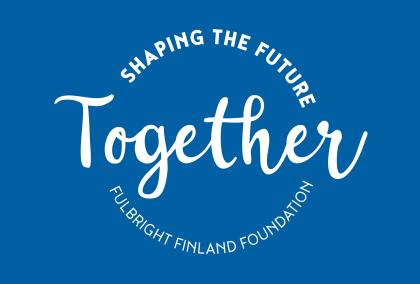The Selection Process
1. Technical review
The evaluation of the applications begins with a technical review. The purpose of the review is to make sure applicants fulfill the minimum requirements stated in the application instructions and that the applications include all of the required documents. Only applications that have arrived by the deadline are considered in the selection process.
The applicant is responsible for including all the required documents in the application according to the application instructions and checklist.
Below you can find application tips from experienced evaluators and their expectations regarding a good application:
A good application is clear; the applicant has a clear plan of what they want to study or what they want to focus on.
In the applications, I mostly pay attention to the whole. In a good application, you can see that the applicant has familiarized themselves well with American universities in advance -- It’s also important to see that the applicant has a clear vision of how their current expertise is linked to the planned period in the U.S. and how the visit helps them in the future. I also find it important that the teaching/studying in this particular host organization/field of study is relatively strong in the U.S. specifically.
One should find out in advance which universities offer important courses and how one can combine them. It would also be good to mention something about the course content.
A good application shows what additional value the grant year can provide for the applicant and their community.
I’ve often missed the information or at least an estimation of how the grant would benefit Finland. The benefit for Finland as a result of the grant ought to be described and reasoned – it’s not enough that the applicant themselves benefit from the grant. Of course, it’s not easy to answer this question but one could at least try.
2. Statements from home universities and grant sponsors
Most of the grants are either cost-shared or sponsored by partner foundations or the applicants' home universities. The Foundation requests evaluations of the applications from applicable grant sponsors as well as from those Finnish universities which have notified they are interested in co-funding their students’ grants. The Foundation's selection committees use these statements in the selection process. Since all applications must fulfill the requirements set for a Fulbright grantee, the support of the sponsor/university alone is not enough for selection.
3. Selecting the applicants for an interview
The Foundation's pre-selection committee selects some of the applicants for an interview based on their evaluations of the applications and all relevant attachments, and the evaluations carried out by the sponsors and Finnish universities. The pre-selection committee consists of Foundation board members, Fulbright alumni, and collaborators.
When evaluating and making the pre-selection decision, the committee focuses on the Foundation's evaluation criteria.
4. The suitability to be an ambassador for Finland and the grant program is determined with the help of interviews
A limited number of applicants are invited to a discussion-style interview held virtually or at the Fulbright Finland Foundation office in Helsinki. After the initial selection stage, where the applicants’ academic achievements are the main focus, in the interviews, the committee concentrates on determining whether an applicant is suitable for an academic cultural exchange program in the U.S. where they are expected to be citizen diplomats and ambassadors for Finland, the Fulbright Finland Foundation, and their possible Finnish home institution. Due to this focus, we are especially looking for applicants who
- have the motivation and ability to create networks and connections between Finland and the U.S.
- who are genuinely interested in cultural exchange
The interview committee also evaluates the applicants’ motivation and abilities to
- facilitate future change
- promote the development of science, arts, or their own professional field
- create opportunities for international collaboration and connections
These types of qualities are difficult to evaluate based on the application alone, which is why the interviews play a very important role in the selection process.
Because the grant selections are not based on academic achievements alone, in some cases the selection committee has had to reject an applicant who, based on their application, has seemed to be an excellent candidate but who has not fulfilled the criteria in terms of the personal attributes required from a citizen diplomat.
5. The Fulbright Finland Foundation selects the grantees
At the end of all the selection process, usually after incredibly difficult consideration, the committee presents their selection recommendations to the Foundation’s Board of Directors, which then makes the final decisions on the grantees.
The formal acceptance of the U.S. program partner is given by the J. William Fulbright Foreign Scholarship Board (FFSB), appointed by the President of the United States.
Both the number of applicants and the acceptance rate vary depending on the year.


